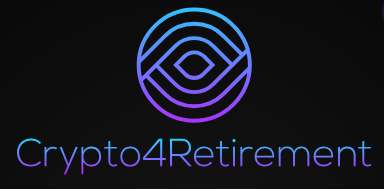
The Virtuals Protocol is a groundbreaking framework that combines the power of artificial intelligence (AI) with decentralized blockchain technology. Designed to enable the creation and deployment of autonomous AI agents, the protocol is poised to revolutionize industries by providing scalable, efficient, and secure solutions. This article dives into the key aspects of the Virtuals Protocol, its core functionalities, and how it’s shaping the future of AI and blockchain integration.
What is the Virtuals Protocol?
The Virtuals Protocol is an advanced blockchain-based infrastructure that empowers the creation of autonomous AI agents capable of performing complex tasks without manual intervention. By leveraging decentralized networks, the protocol ensures transparency, security, and reliability, making it ideal for applications across finance, gaming, supply chain, and more.
Key Objectives
- Autonomy: Allow AI agents to function independently while interacting with users and systems.
- Interoperability: Enable seamless integration with multiple blockchain ecosystems.
- Scalability: Handle increasing workloads and data efficiently.
- Security: Protect sensitive data and ensure tamper-proof operations.
Core Components of the Virtuals Protocol
1. Autonomous AI Agents

At the heart of the protocol are autonomous AI agents, which are software entities programmed to perform specific tasks. These agents are powered by machine learning models and operate using smart contracts on the blockchain.
2. Decentralized Infrastructure
The protocol relies on a decentralized blockchain network to ensure transparency and eliminate single points of failure. This infrastructure supports:
- Immutable records of agent activities.
- Decentralized governance to control protocol updates and improvements.
3. Smart Contracts
Smart contracts automate the interactions between AI agents and users, ensuring seamless execution of tasks such as payments, data processing, and decision-making.
4. Tokenomics
The protocol introduces a native token to facilitate transactions, incentivize participants, and manage resource allocation. Tokens may be used for:
- Paying for AI agent services.
- Staking to support network security.
- Participating in governance decisions.
How the Virtuals Protocol Works
1. Deploying AI Agents
Developers can deploy AI agents on the protocol using predefined templates or custom models. These agents are then hosted on the decentralized network, where they interact with users and systems.
2. Task Execution
AI agents are programmed to handle specific tasks such as data analysis, process automation, or predictive modeling. Once deployed, they autonomously:
- Fetch data from external sources.
- Process information using AI algorithms.
- Provide outputs or take predefined actions.
3. Payments and Incentives
The protocol ensures fair compensation for AI agents and developers through its native token. Payments are processed seamlessly on-chain, ensuring transparency.
Applications of the Virtuals Protocol
1. Decentralized Finance (DeFi)
AI agents can optimize trading strategies, manage portfolios, and analyze market trends, making them indispensable in the DeFi space.
2. Gaming
In the gaming industry, AI agents can create intelligent NPCs (non-player characters), manage in-game economies, and enhance user experiences.
3. Supply Chain Management
AI agents can monitor logistics, predict demand, and optimize resource allocation in real time.
4. Content Creation
The protocol enables AI-driven content generation, such as writing, music production, and digital art creation.
5. Virtual Assistants
AI agents powered by the Virtuals Protocol can act as virtual assistants, handling customer service inquiries or personal organization tasks.
Benefits of the Virtuals Protocol
1. Efficiency
AI agents handle tasks autonomously, reducing manual intervention and improving productivity.
2. Cost Savings
Decentralized infrastructure minimizes overhead costs associated with centralized systems.
3. Transparency
Blockchain ensures that all activities and interactions are recorded immutably, fostering trust among participants.
4. Security
The use of blockchain and cryptographic techniques secures data and prevents tampering.
Challenges and Considerations
1. Technical Complexity
Building and deploying AI agents on the protocol require advanced expertise in AI and blockchain.
2. Scalability
Although designed for scalability, the protocol must address challenges related to handling high transaction volumes and data loads.
3. Regulatory Uncertainty
As with most blockchain-based systems, regulatory compliance remains a gray area in many jurisdictions.
The Future of the Virtuals Protocol
The Virtuals Protocol is set to redefine the integration of AI and blockchain technologies. By enabling the deployment of autonomous AI agents in decentralized ecosystems, it opens up endless possibilities for innovation. Future developments may include:
- Enhanced Interoperability: Integration with more blockchains and data sources.
- Advanced AI Models: Incorporating cutting-edge machine learning algorithms.
- User-Friendly Interfaces: Simplifying the deployment and interaction with AI agents.
Conclusion
The Virtuals Protocol represents a significant step forward in the evolution of decentralized AI. Its innovative framework for autonomous AI agents has the potential to transform industries and create a more efficient, secure, and transparent future. As adoption grows, the protocol is likely to become a cornerstone of AI and blockchain convergence.

